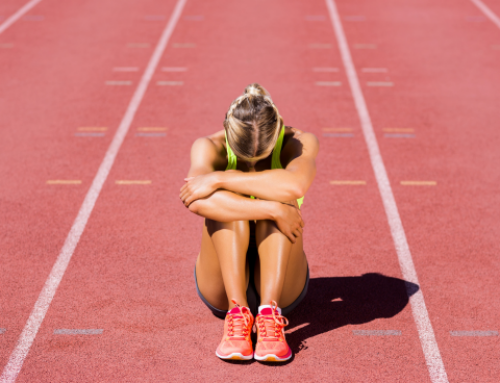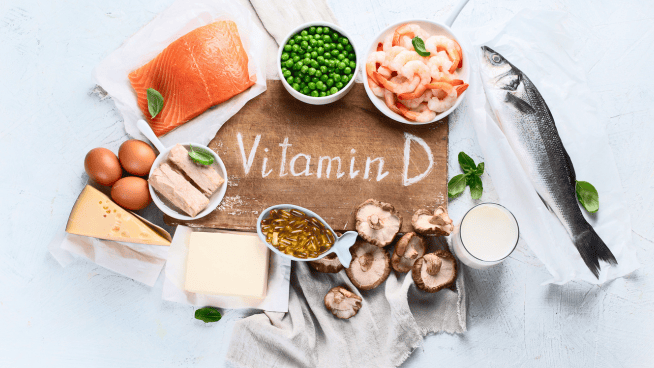Female Athletes and Missing Periods
All too often, a missing period can get brushed off as just a normal result of training, eating healthy, or everyday life. However, it’s important to realize that it can be a sign that your nutrition isn’t where it needs to be. This is such an important topic for all active females to be aware of. Read all you need to know about missing periods and what to do about it.
First off, it’s important to know what qualifies as an abnormal or missing period. Normal periods come about every 21-35 days and last at least 3-4 days. Any change from this, especially for 2 months or more, can be a sign of a hormonal imbalance or the body being unable to create enough hormones for a healthy cycle.
Low Energy Availability
For this article, we’re focusing on abnormal cycles that occur due to something called low energy availability. Low energy availability (LEA) occurs when there’s not enough energy (or calories) being taken in to meet the body’s energy needs, and it is a cornerstone of what is now being called relative energy deficiency in sport or RED-S. Both ideas encompass ALL OF THE health and performance consequences of low energy availability, including a missing or irregular period.
Although research on RED-S and the female athlete triad mainly includes athletes, the concept of low energy availability (LEA) can very much apply to any females, active or not active, who simply aren’t eating enough. The important thing to remember is that this can be going on for various reasons and does not always occur with disordered eating, although disordered eating tendencies are common in LEA. Some of the most common reasons for LEA other than disordered eating or an active eating disorder include low priority of eating, busy schedule with limited time to eat or availability of food, history of disordered eating, low body fat, lack of knowledge, high levels of training/exercise, and/or a mismanaged weight loss program.
Hormone Health
One of the most common and serious implications of LEA is its impact on hormone health. While menstrual dysfunction, also known as amenorrhea, oligomenorrhea, or missing/irregular periods, isn’t uncommon in women, most women aren’t aware of its connection to LEA. When there is fewer calories available to the body for energy, the body will skimp on the energy it puts towards systems, like reproduction, that aren’t seen as necessary for daily survival. For females, this almost always means their menstrual cycle and fertility will be impacted. Irregular periods can occur in as many as 60% of recreational athletes and up to 65% of athletes in some sports, especially those that idolize thinness like running, gymnastics, and dance. Importantly, menstrual irregularities have been linked to low bone mineral density in females, leading to increased risk for injury and osteoporosis (softening of the bone) at a young age.
It’s also important to note that although hormonal changes are often the most noticeable effects of LEA, it can affect many other systems. Your body wants to do anything that it can to survive on a day-to-day basis. If there is less energy available for survival, it will prioritize high priority systems, like the heart, brain, and lungs, above all else. As a result, other systems, like hair, nails, skin, immunity, optimal cognition, digestion, will have less energy for use.
So, what should you do if your period goes missing? Here are a few tips…
- Focus on getting more carbs and dietary fat: Carbohydrates and fats are the key ingredients in hormone production. Aim for a source of starchy carbs, like rice, potatoes, bread, and pasta, and fat, like avocados, cheese, olive oil, nuts/seeds, or nut butter, at each meal. Other sources of carbs, like fruits, starchy vegetables, and dairy, can be helpful too.
- Avoid skipping meals or snacks: Skipping meals and snacks can make it harder to meet your overall nutrition and energy needs. Aim for at least 3 meals and 1-2 snacks daily to keep up with the amount of fuel your body needs.
- Focus on rest days: When we are too active, it means our body requires more energy to survive and eating all the body needs can sometimes be hard to keep up with, especially with a busy schedule. Make it easier for you to meet your body’s needs by cutting down on exercise and giving your body ample time to rest and recover.
- Keep an eye on stress! Stress can play a huge part of hypothalamic amenorrhea, a result of low energy availability. Decrease your stress through deep breathing, meditation, and activities just for enjoyment daily.
Dietary and lifestyle changes to address to get your period back are often easy and risk-free. If you think energy availability issues are a concern for you, a nutrition assessment by a Registered Dietitian, ideally a Certified Sports Dietitian (look for the CSSD) who is uniquely trained in this area, can be an easy next step to help you get your health and performance back on track.
Read More
- Why Female Athletes Can’t Afford to Ignore the Warning Signs of an Absent or Irregular Cycle
- How the Female Athlete Triad Can Ruin Your Sports Performance
- 6 Vitamins and Minerals Every Athlete Needs to Know
- How to Build Muscle for Women
RECOMMENDED FOR YOU
Female Athletes and Missing Periods
All too often, a missing period can get brushed off as just a normal result of training, eating healthy, or everyday life. However, it’s important to realize that it can be a sign that your nutrition isn’t where it needs to be. This is such an important topic for all active females to be aware of. Read all you need to know about missing periods and what to do about it.
First off, it’s important to know what qualifies as an abnormal or missing period. Normal periods come about every 21-35 days and last at least 3-4 days. Any change from this, especially for 2 months or more, can be a sign of a hormonal imbalance or the body being unable to create enough hormones for a healthy cycle.
Low Energy Availability
For this article, we’re focusing on abnormal cycles that occur due to something called low energy availability. Low energy availability (LEA) occurs when there’s not enough energy (or calories) being taken in to meet the body’s energy needs, and it is a cornerstone of what is now being called relative energy deficiency in sport or RED-S. Both ideas encompass ALL OF THE health and performance consequences of low energy availability, including a missing or irregular period.
Although research on RED-S and the female athlete triad mainly includes athletes, the concept of low energy availability (LEA) can very much apply to any females, active or not active, who simply aren’t eating enough. The important thing to remember is that this can be going on for various reasons and does not always occur with disordered eating, although disordered eating tendencies are common in LEA. Some of the most common reasons for LEA other than disordered eating or an active eating disorder include low priority of eating, busy schedule with limited time to eat or availability of food, history of disordered eating, low body fat, lack of knowledge, high levels of training/exercise, and/or a mismanaged weight loss program.
Hormone Health
One of the most common and serious implications of LEA is its impact on hormone health. While menstrual dysfunction, also known as amenorrhea, oligomenorrhea, or missing/irregular periods, isn’t uncommon in women, most women aren’t aware of its connection to LEA. When there is fewer calories available to the body for energy, the body will skimp on the energy it puts towards systems, like reproduction, that aren’t seen as necessary for daily survival. For females, this almost always means their menstrual cycle and fertility will be impacted. Irregular periods can occur in as many as 60% of recreational athletes and up to 65% of athletes in some sports, especially those that idolize thinness like running, gymnastics, and dance. Importantly, menstrual irregularities have been linked to low bone mineral density in females, leading to increased risk for injury and osteoporosis (softening of the bone) at a young age.
It’s also important to note that although hormonal changes are often the most noticeable effects of LEA, it can affect many other systems. Your body wants to do anything that it can to survive on a day-to-day basis. If there is less energy available for survival, it will prioritize high priority systems, like the heart, brain, and lungs, above all else. As a result, other systems, like hair, nails, skin, immunity, optimal cognition, digestion, will have less energy for use.
So, what should you do if your period goes missing? Here are a few tips…
- Focus on getting more carbs and dietary fat: Carbohydrates and fats are the key ingredients in hormone production. Aim for a source of starchy carbs, like rice, potatoes, bread, and pasta, and fat, like avocados, cheese, olive oil, nuts/seeds, or nut butter, at each meal. Other sources of carbs, like fruits, starchy vegetables, and dairy, can be helpful too.
- Avoid skipping meals or snacks: Skipping meals and snacks can make it harder to meet your overall nutrition and energy needs. Aim for at least 3 meals and 1-2 snacks daily to keep up with the amount of fuel your body needs.
- Focus on rest days: When we are too active, it means our body requires more energy to survive and eating all the body needs can sometimes be hard to keep up with, especially with a busy schedule. Make it easier for you to meet your body’s needs by cutting down on exercise and giving your body ample time to rest and recover.
- Keep an eye on stress! Stress can play a huge part of hypothalamic amenorrhea, a result of low energy availability. Decrease your stress through deep breathing, meditation, and activities just for enjoyment daily.
Dietary and lifestyle changes to address to get your period back are often easy and risk-free. If you think energy availability issues are a concern for you, a nutrition assessment by a Registered Dietitian, ideally a Certified Sports Dietitian (look for the CSSD) who is uniquely trained in this area, can be an easy next step to help you get your health and performance back on track.
Read More
- Why Female Athletes Can’t Afford to Ignore the Warning Signs of an Absent or Irregular Cycle
- How the Female Athlete Triad Can Ruin Your Sports Performance
- 6 Vitamins and Minerals Every Athlete Needs to Know
- How to Build Muscle for Women










